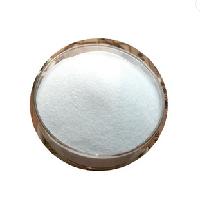-
Categories
-
Pharmaceutical Intermediates
-
Active Pharmaceutical Ingredients
-
Food Additives
- Industrial Coatings
- Agrochemicals
- Dyes and Pigments
- Surfactant
- Flavors and Fragrances
- Chemical Reagents
- Catalyst and Auxiliary
- Natural Products
- Inorganic Chemistry
-
Organic Chemistry
-
Biochemical Engineering
- Analytical Chemistry
-
Cosmetic Ingredient
- Water Treatment Chemical
-
Pharmaceutical Intermediates
Promotion
ECHEMI Mall
Wholesale
Weekly Price
Exhibition
News
-
Trade Service
In a recent article in the American Chemical Society's Pharmaceutical Chemistry Letters, Mr. Todd J. Wills and Alan H. Lipkus of the Chemical Digest Service (CAS) proposed new innovative indicators for small molecules and peptide drugs based on structural novelty, while analyzing trends in drug innovation in recent years.
authors argue that, despite concerns about the innovation crisis, drug development innovation has increased significantly over the past few decades, making pioneers more likely to be a source of promising new therapies.
so-called pioneers, which refer to molecules in shapes and skeletons that have never appeared in drugs previously approved by the FDA.
's analysis of the underlying sources of structural innovation shows that skeletons first reported in the Chemical Substances Database (CAS REGISTRY) five years or less before clinical studies apply for new drugs (INDs), or on skeletons filled with 50 or fewer compounds at IND, are often the primary sources of the first drugs.
image Source: Resources 1. This is done at the level of two details, scaffolding and shape.
the former is the structure that remains after trimming all the ringless side chains in the structure, and the latter is the skeleton that returns all the remaining atoms to just ordinary carbon atoms.
most approved drugs have some type of ring structure.
the authors identified a collection of 1,089 new molecular entities (NMEs) approved by the FDA since 1938.
the structure of these compounds into one of three types of structures.
"pioneers" refers to compounds that have never been used in NME in shape and skeleton.
"settlers" refer to compounds that have been used in their overall shape but do not include specific skeletons (and therefore will allow movement of nitrogen molecules, etc.).
"colonists" refer to compounds that are shaped and used by skeletons, but differ only in side chains.
fact, the "first drug" molecule is not uncommon on the list of therapeutic innovators, which is to be sure.
as a synthetic chemist, which is a quantitative approach that everyone relishes and enjoys seeing.
about 20 per cent of the "first drugs" were imitated by "settlers", while about 20 per cent of the "settlers" were imitated by similar "colonists".
who know the history of medical chemistry may recall what Sir James Black, the 1988 Nobel Laureate in Physiology or Medicine, said: The best way to find a new drug is to start with an old one! In fact, from around 1970 to the early 2000s, the "colonial" structure was the largest of the new FDA-approved drugs.
but since the early 2000s, the "first drug" structure has begun to take effect, establishing an unprecedented leadership position.
This appears to be the result of a combination of two co-existing factors: an increase in the number of "first drug" structures (which have been increasing at an uneven rate since some point in the 1990s and are now increasing at an accelerated rate);
the middle category of "settler" compounds, which have been hovering in third place at roughly similar levels.
photo source: Resources : Over the past 20 years, a total of 248 approved "first-in-the-post structures" have been approved, and the authors of the paper have carefully studied these structures.
between 2000 and 2004, 43 per cent of the approved "first-in-the-out structures" came from large companies.
but over the next five years, that number is falling and is now down to 30 per cent.
at the same time, the number of big companies has not declined, more from strong growth outside the system of large companies.
authors speculate that when research and development organizations need resources to do really new structures, the size and scale of research and development organizations may not have the same advantages as before.
image source: References. Dr. Derek Lowe, a well-known blogger, thinks it's interesting to speculate on the reasons behind these facts.
more business options for building blocks that may not have been used in drugs before? Perhaps due to the effects of easy-to-run chemical reactions (metal catalytic coupled agents, etc.).
these factors seem best suited to the generation of "settlers" and "colonists", it may also be easier to study novel skeletons.
: s1. Todd J. Wills, Alan H. Lipkus. Structural Approach to Assessing the Innovativeness of New Drugs Finds Accelerating Rate of Innovation. ACS Medicinal Chemistry Letters. ACS Medicinal Chemistry Letters. DOI: 10.1021/acsmedchemlett.0c00319 . New Drugs and New Structures. Sept 23, 2020. Retrieved Sept 24, 2020 from







